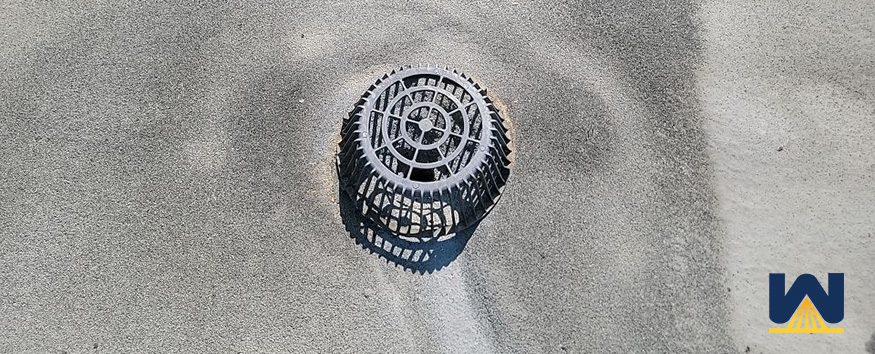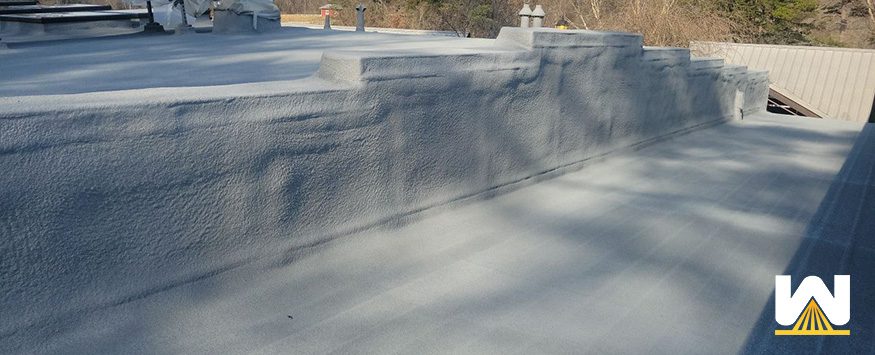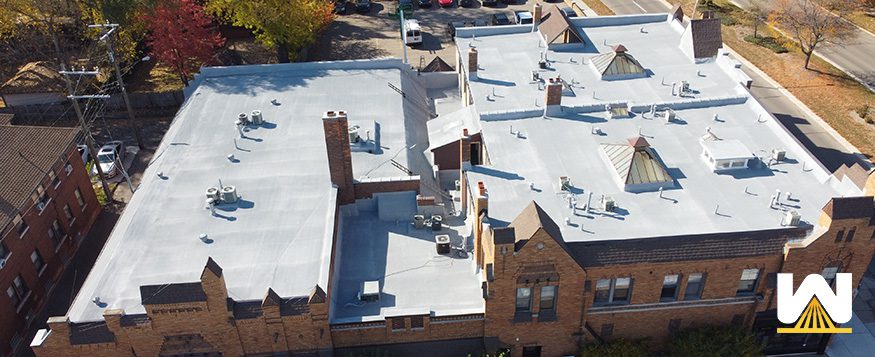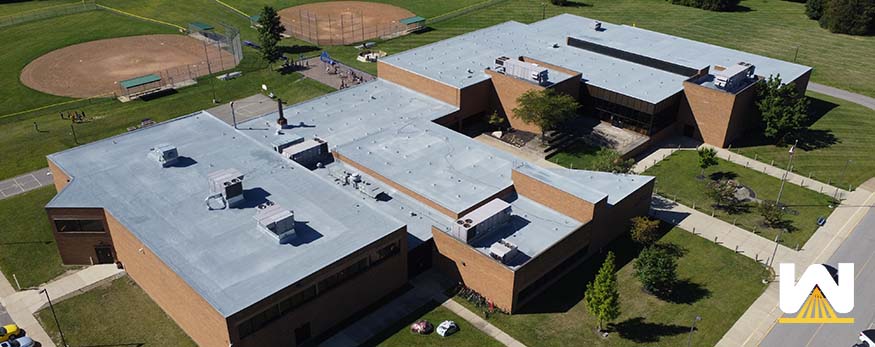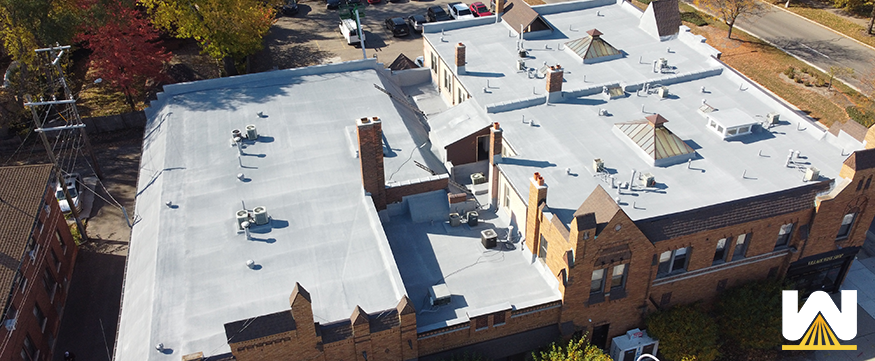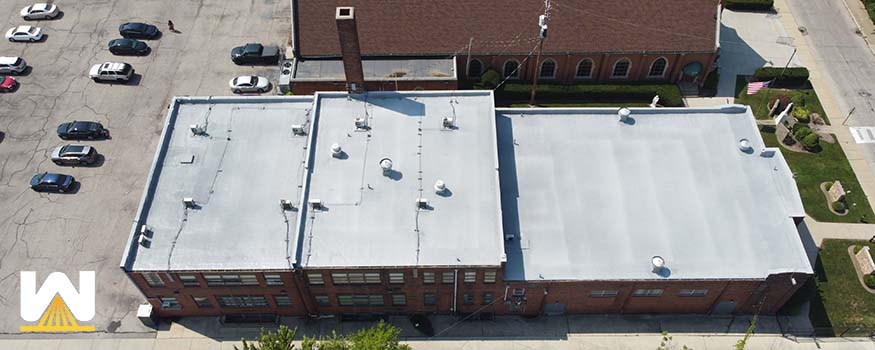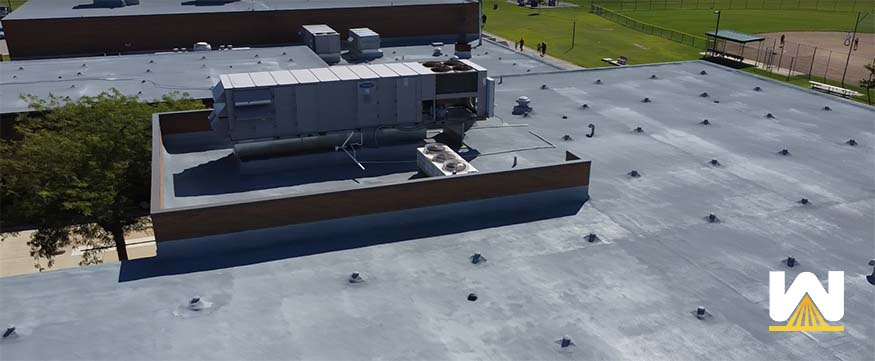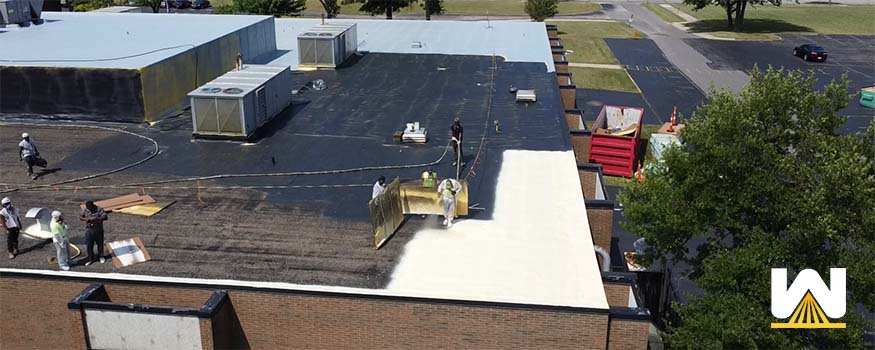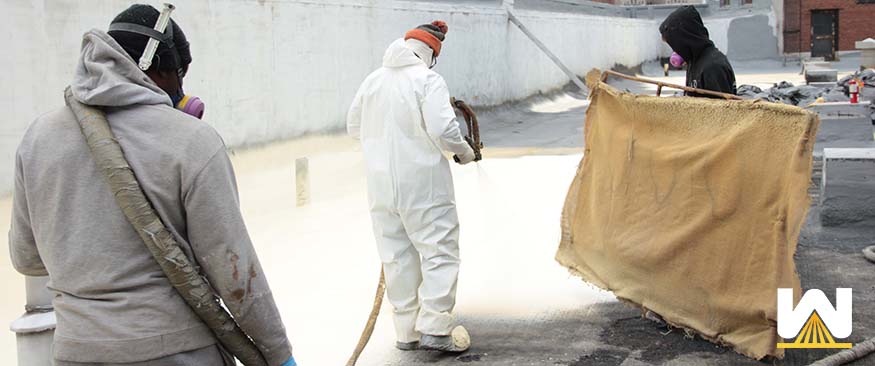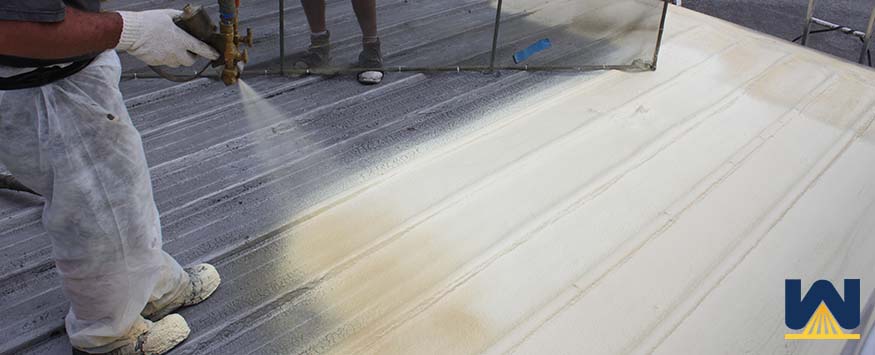People always say, “We got a spray foam roof installed with a 20-year warranty, so why do I need a maintenance contract”? We’ll solve this debate in this article. The NRCA (National Roofing Contractor’s Association) recommends all roofing systems get inspected twice per year, in the Spring and Fall. The reason is that in the Spring, you’re seeing what happened …
What Are the Capabilities of Spray Foam Roofing?
Quick summary: Spray foam can be installed over any existing roofing system. It can also go over flat, sloped, and irregular-shaped roofs. Since spray foam is fluid-applied, it can be installed around any pipe, skylight, or drain quickly. It can go up, over, and down any vertical wall in one continuous application. A spray foam roof can be renewed over and …
How Strong Is a Spray Foam and Coating Roof? The Truth About Durability and Walkability
Quick answer: The density of spray foam is designed to allow for foot traffic. Spray foam is denser than the commonly used “ISO-Board” in other roof systems. The silicone coating thickness is installed per manufacturer guidelines based on stringent testing. Perhaps you have a roof leak on a commercial building and are looking at potential roofing systems to install. Maybe …
The 17 Most Common Questions About Spray Foam Roofing
On average, a spray foam roof costs $5 – $10 per square foot. We know this is a wide range. Many variables influence the cost, including the roof size, the warranty length, and the desired R-value. Learn more about them in this article. A spray foam roof will be the last roof you ever install on your building. This is because …
What Kind of Spray Foam Do Roofers Use?
The spray foam that commercial roofing contractors use is called 3-pound foam. This means that a cubic foot, 1ft x 1ft x 1ft weighs 3 pounds. This differs from the foam used for interior insulation, which is 2-pound or ½-pound foam. The main reason 3-pound foam is used for roofing is that it self-levels better (due to a slower reaction …
Why Do Spray Foam Roofs Need Recoated?
Quick Answer: Spray foam roofs require a recoat every 10-20 years because the coating that protects the foam from UV rays wears away. Perhaps you’ve heard the term “spray foam recoat” but didn’t know what it means. At first, you might think it’s a bad thing. Why would a spray foam roof need a recoat? Can’t it just last a …
What’s the Best Way to Flash a Roof Against a Vertical Wall?
Perhaps you’re a property owner who’s had multiple issues with flashing a vertical wall? You’ve tried “patching,” but that’s only worked for a few months. It’s time to think about a different option and get rid of the headache. In this article, you’ll learn: Spray foam and silicone coatings are seamless and fluid-applied, creating a smooth transition when meeting a …
How Does a Company Install the Correct Thickness of Foam?
So, you have some questions about a spray foam roof installation. One question you have is: “How are they able to accurately level a sprayed foam over the existing roof for consistent depth of foam?” Here’s a response from one of our owners: “Our spray foam applicators are trained and have a minimum of 5 years of experience. Also note …
How Does Spray Foam Get Secured to an Existing Roof?
Perhaps you’re learning about spray foam roofing for the first time. You hear how it’s seamless, fluid-applied, and in most cases, doesn’t require the existing roof to be removed. And you wonder, how does the foam attach to an existing roof? Coming from one of our owners, the short answer is: “Spray foam is sprayed directly to a clean/prepared surface. …
What Is a Self-flashing Roof and What Are Its Benefits?
A self-flashing roof is when the top layer of a roof doesn’t need fasteners, adhesives, or rocks to be secured to the insulation or deck below. There are only two examples of a self-flashing roof. So why does this matter? Or what are the benefits of having a self-flashing roof? In this post, you’ll learn: And just so you’re aware, …

